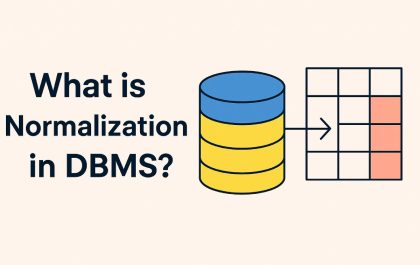Table of Contents
ToggleAnastasios Arampatzis
In the rapidly evolving landscape of the healthcare and pharmaceutical industries, intellectual property (IP) stands as the foundation of innovation and competitive advantage. The development of groundbreaking medications, revolutionary medical devices, and cutting-edge research constitutes not just scientific advancement but also immense economic value. However, this invaluable IP is under an ever-increasing threat from various quarters, notably through IP theft. This blog aims to shed light on the overlooked aspects of cybersecurity, focusing on understanding, mitigating, and preventing IP theft, a crucial concern for executives in these sectors.
The Growing Challenge of IP Theft
The threat of IP theft is neither abstract nor distant; it is a present and escalating danger with substantial repercussions. Recent statistics reveal a startling increase in the instances and sophistication of IP theft, particularly in sectors where innovation is the lifeline. The healthcare and pharmaceutical industries, being repositories of high-value information and groundbreaking innovations, have become prime targets for such illicit activities.
IP theft is not just a sporadic occurrence but a systemic issue. For instance, the loss of confidential data and proprietary technologies can derail years of research, leading to significant financial losses and eroding competitive edges. More disturbingly, it can delay the introduction of life-saving treatments and technologies to the market, directly affecting patient care and public health. To scale the impact of an IP theft incident, it is worth considering that in 2020 alone, the US biopharmaceutical industry spent $122 billion on R&D.
The healthcare and pharmaceutical industries have witnessed several high-profile cases of IP theft. These incidents range from cyberattacks aimed at stealing research data on promising new drugs to insider threats where employees illicitly transfer sensitive information to competitors or foreign entities. Such instances not only result in direct financial losses but also compromise patient safety, violate trust, and tarnish reputations.
The implications of IP theft extend beyond immediate financial setbacks. It can stifle innovation by diverting resources to legal battles and security measures. It also raises concerns about patient privacy and the integrity of clinical data. In a sector where trust and credibility are paramount, the fallout from IP theft can be particularly devastating.
Understanding IP Theft in Healthcare and Pharmaceuticals
In the healthcare and pharmaceutical sectors, the spectrum of IP vulnerable to theft is vast and varied. This includes proprietary drug formulas, patented medical device designs, confidential clinical trial data, and even trade secrets related to manufacturing processes. The theft of such IP can originate from a myriad of sources and can hide several incentives.
Understanding the common methods of IP theft is crucial for prevention. Cyberattacks often exploit vulnerabilities in IT systems, such as unpatched software or weak network security. Phishing attacks target employees, tricking them into revealing login credentials or downloading malware. On the other hand, insider threats are more insidious. They can range from disgruntled employees seeking retribution to those tempted by financial incentives offered by competitors or foreign entities.
Real-world examples of IP theft in these industries often read like espionage thrillers. Take, for instance, a case where a scientist at a pharmaceutical company was found guilty of stealing trade secrets related to cancer research, intending to set up a rival company in another country. Such incidents not only represent a direct financial loss but also compromise the ethical and legal foundations of scientific research.
Insider Threats: A Hidden Danger
While external cyber threats garner much attention, insider threats represent a significant and often overlooked risk in IP theft. These threats come from individuals within the organization who have authorized access to sensitive information and systems. The motivations behind such threats can vary from financial gain to personal grievances or even coercion from external entities.
Insider threats are particularly challenging to detect and prevent because they involve exploiting legitimate access rights. Employees, contractors, or business partners might misuse their access for malicious purposes. For instance, a trusted researcher might illicitly copy sensitive drug formulas or clinical trial data, intending to sell them to a competitor or foreign company.
Principles for Protecting IP
To effectively guard against IP theft, executives in healthcare and pharmaceutical industries need to adopt a multi-faceted approach based on the following strategies:
- Implement state-of-the-art cybersecurity infrastructure, including firewalls, intrusion detection systems, and regular security audits. Encrypting sensitive data and ensuring regular updates and patches to software systems are also critical.
- Employees should be trained to recognize and respond to cyber threats like phishing. They should also be educated about the importance of IP and the consequences of its theft, creating a culture of accountability and vigilance.
- Limiting access to sensitive IP based on roles and responsibilities is crucial. Additionally, monitoring and logging access to IP can help in early detection of any unauthorized or suspicious activities.
- Ensuring adherence to relevant laws and industry regulations regarding data protection and IP rights is a must. This includes understanding and implementing guidelines under HIPAA, GDPR, and other relevant frameworks.
- Having a well-defined incident response plan in place ensures quick and effective action in the event of an IP breach. This plan should include steps for containment, investigation, and legal action if necessary.
By integrating these principles into their cybersecurity strategy, executives can significantly enhance the protection of their IP assets. This proactive stance not only safeguards their intellectual property but also reinforces their reputation as responsible and secure innovators in the healthcare and pharmaceutical sectors.
The Role of Leadership in IP Protection
The responsibility of safeguarding IP in the healthcare and pharmaceutical industries ultimately rests on the shoulders of its leadership. Executives play a crucial role in shaping the organization’s approach to IP protection. This involves not just endorsing policies but actively promoting a culture of security and ethical conduct.
Leadership must demonstrate a clear commitment to cybersecurity. This includes allocating adequate resources for security initiatives, staying informed about the latest threats and protection strategies, and leading by example. For instance, executives should be the first to adhere to security protocols and encourage open communication about security concerns within the organization.
Moreover, leaders need to foster a proactive approach to cybersecurity. This involves regular risk assessments, staying ahead of emerging threats, and ensuring that the organization’s security measures evolve in tandem with its growth and technological advancements. It also means engaging with all levels of the organization to ensure that everyone understands their role in protecting IP.
In essence, the role of leadership in IP protection is about creating a resilient organization. This resilience is built on a foundation of robust security practices, a culture of awareness and responsibility, and an unwavering commitment to ethical standards. By leading from the front, executives can significantly bolster their organization’s defenses against IP theft, securing not just their intellectual assets but also their reputation and future.
Conclusion
The landscape of IP protection in the healthcare and pharmaceutical industries is complex and ever-evolving. As we have explored, the threat of IP theft extends beyond external cyberattacks to include the more subtle but equally dangerous insider threats. Protecting IP in these sectors requires a holistic approach, combining robust technological solutions with committed leadership, strong organizational culture of security, and ethical practices. IP protection is about ensuring the continued advancement of life sciences to the benefit of the society.
Anastasios Arampatzis is a retired Hellenic Air Force officer with over 20 years’ worth of experience in managing IT projects and evaluating cybersecurity. During his service in the Armed Forces, he was assigned to various key positions in national, NATO and EU headquarters and has been honoured by numerous high-ranking officers for his expertise and professionalism. He was nominated as a certified NATO evaluator for information security.
Anastasios’ interests include among others cybersecurity policy and governance, ICS and IoT security, encryption, and certificates management. He is also exploring the human side of cybersecurity – the psychology of security, public education, organizational training programs, and the effect of biases (cultural, heuristic and cognitive) in applying cybersecurity policies and integrating technology into learning. He is intrigued by new challenges, open-minded and flexible.
Currently, he works as a cybersecurity content writer for Bora Design. Tassos is a member of the non-profit organization Homo Digitalis.
Related posts
Hot Topics
Enhancing School Safety with Intelligent Threat Response Systems
Introduction According to the K-12 School Shooting Database, there were 346 school shootings in the United States in 2023 alone,…
What is Normalization in DBMS: The Complete Guide
What is normalization in DBMS? Look, I’m gonna be straight with you – when I first heard this term, I…



